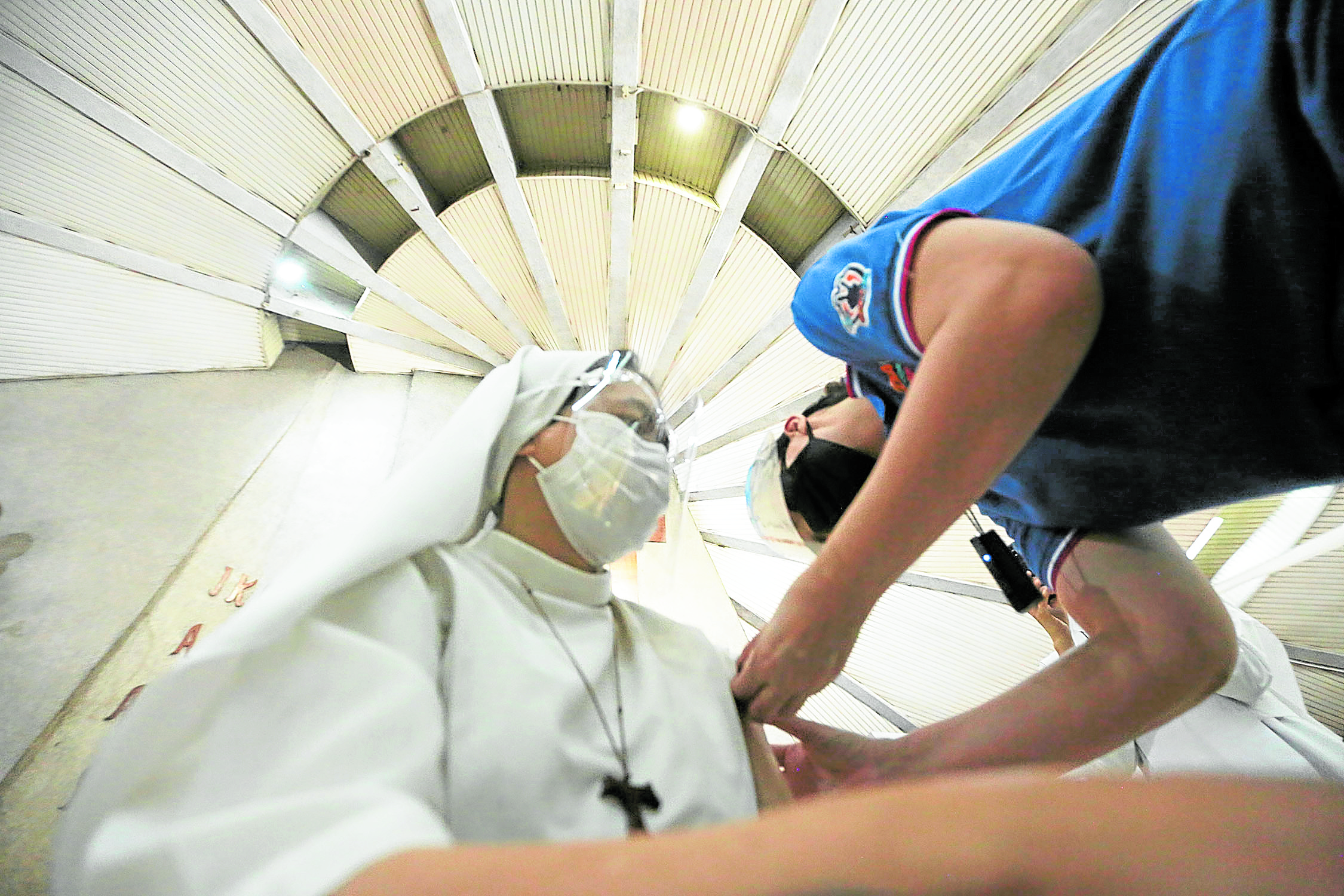
BLESSING A nun is inoculated at Immaculate Heart of Mary Parish church in Diliman, Quezon City, which was turned into a COVID-19 vaccination center on Friday, May 21, 2021. More churchgoers in Metro Manila may now attend religious gatherings after mayors in the capital region approved such assemblies at 30 percent of the venue’s capacity. —GRIG C. MONTEGRANDE
MANILA, Philippines — More people from Metro Manila would be able to attend religious gatherings after mayors in the National Capital Region permitted these to be conducted at 30 percent of venue capacity, Malacañang announced on Friday.
This was an increase from the previous 10-percent venue capacity for religious gatherings set by the Inter-Agency Task Force for the Management of Emerging Infectious Diseases (IATF) for areas under general community quarantine with heightened restrictions, according to presidential spokesperson Harry Roque Jr.
Roque, who also speaks for the IATF, said local governments had the discretion to increase the venue capacity for religious gatherings as long as this would not exceed 30 percent.
The IATF took note of the decision of the Metro Manila mayors to increase the venue capacity for religious gatherings.
Metro Manila and the adjacent provinces of Bulacan, Cavite, Laguna and Rizal are under general community quarantine with heightened restrictions until the end of the month to manage the recent surge of COVID-19 cases.
The IATF also approved the conduct of the ninth meeting of the Association of Southeast Asian Nations Plus Three Emergency Rice Reserve of the National Food Authority, Roque said.
The meeting is considered an essential gathering, he added.
He also said the Department of Public Works and Highways was allowed to resume relocation activities for affected informal settlers in connection with their construction projects.
The relocation should be conducted in accordance with existing laws and ordinances, and subject to safety and health measures and strict observance of minimum public health standards.